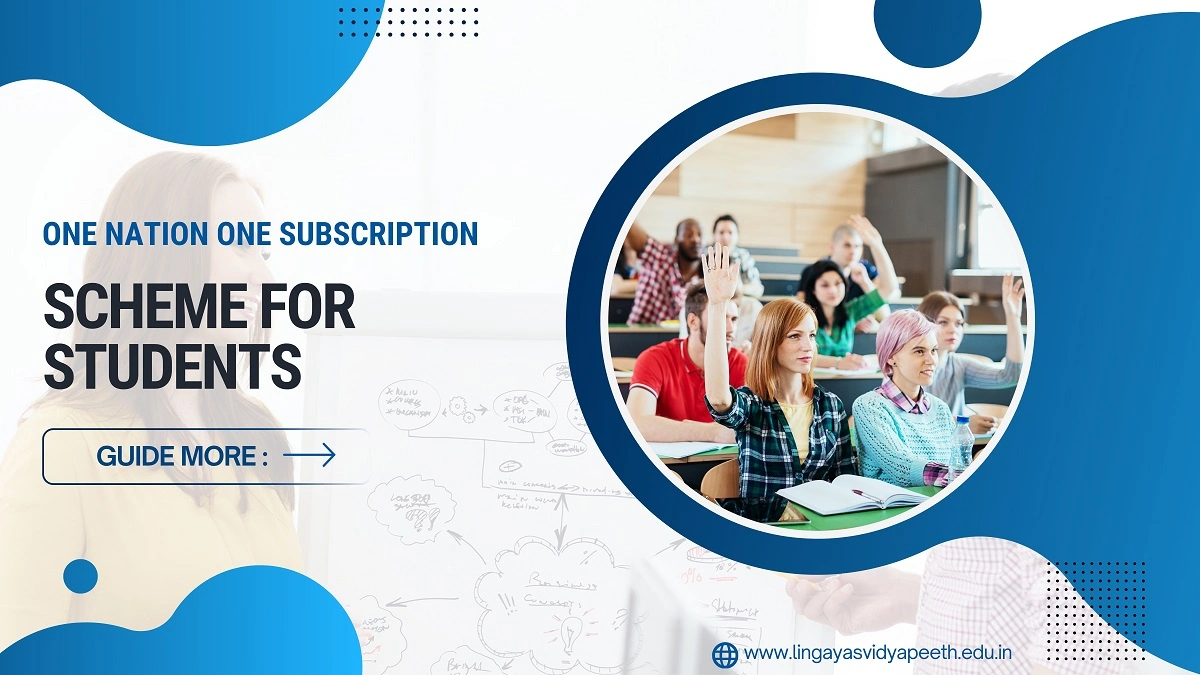Home » One Nation One Subscription Scheme for Students

Imagine being a university student in India, eager to dive into cutting-edge research but stuck behind expensive journal paywalls. For millions, this was reality—until the One Nation One Subscription (ONOS) scheme changed the game. Launched on January 1, 2025, with a ₹6,000 crore budget, ONOS grants 1.8 crore students free access to over 13,000 international journals.
From master’s scholars to PhD researchers, ONOS is revolutionizing education. With India’s academic market soaring to $225 billion by 2025, discover how ONOS empowers students, bridges knowledge gaps, and fuels careers in AI, biotech, and beyond!
The One Nation One Subscription (ONOS) project, sanctioned by the Union Cabinet on November 25, 2024, is a revolutionary Central Sector effort. It provides seamless, nationwide access to scholarly e-journals for students, faculty, and researchers across 6,300+ government-run higher education institutions (HEIs) and R&D labs.
Coordinated by the Information and Library Network (INFLIBNET) under the UGC, ONOS allocates ₹6,000 crore for 2025–2027 to secure subscriptions from 30 global publishers like Elsevier and Springer Nature.
Aligned with NEP 2020 and Viksit Bharat @2047, it benefits 1.8 crore users, especially in tier-2 and tier-3 cities, fostering research in STEM, humanities, and interdisciplinary fields.
ONOS unlocks a vast array of academic resources:
Accessing ONOS is user-friendly and digital:
ONOS positions India as a pioneer in open access:
Aligned with NEP 2020, ONOS inspires nations like South Africa to explore similar initiatives, cementing India’s knowledge leadership.
ONOS isn’t without flaws:
The Anusandhan National Research Foundation (ANRF) must tackle these through infrastructure and outreach efforts.
ONOS has ambitious plans:
These steps will make ONOS a pillar of India’s $5 trillion economy vision.
University students can harness ONOS for academic and career gains:
The One Nation One Subscription scheme is a lifeline for 1.8 crore Indian students, breaking paywalls to provide free access to 13,000+ global journals. From engineering to agriculture scholars, ONOS fuels research in India’s $350 billion tech and $225 billion education sectors. Despite challenges like costs and digital divides, its accessible portal, APC support, and future expansions promise a knowledge revolution. Students can publish, innovate, and compete globally by tapping this resource.
From
Lingaya’s Vidyapeeth
Best Colleges in Delhi NCR
RECENT POSTS
CATEGORIES
TAGS
Agriculture Agriculture future AI Architecture artificial intelligence Bachelor of Commerce BA English BA Psychology BTech AIML BTech CSE BTech cybersecurity BTech Engineering Business management career Career-Specific Education career guide career option career scope Civil engineering commerce and management Computer Science Computer science engineering Data science degree education Engineering Engineering students English Literature english program Fashion Design Fashion design course Higher Education Journalism journalism and mass communication law Law career Machine Learning mathematics MBA MBA specialization Mechanical Engineering Pharmacy Psychology Research and Development students
Nachauli, Jasana Road, Faridabad, Haryana
Address: C-72, Second Floor, Shivalik, Near Malviya Nagar,
Above HDFC Bank, New Delhi 110017
Landline No. - 011-46570515 / 45138169 / 41755703
Mobile No. - +91-7303152412 / +91-7303152420 / +91-9311321952
Toll Free: 1800-120-4613
Mobile : 8447744303 | 8447744304 | 8447744306 | 8447744309
8700003974 | 8700003411 | 8700003749
Copyrights © 1998 - 2025 Lingaya's Vidyapeeth (Deemed To Be University). All rights reserved.
LV only conducts physical/online verification of any document related to examination on the following email id:
It is important to note that the following email IDs and domains are fraudulent and do not belong to our university.